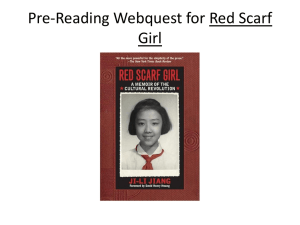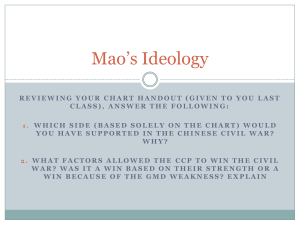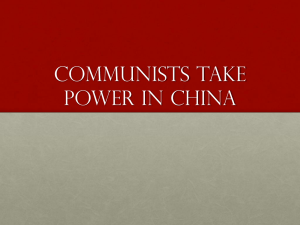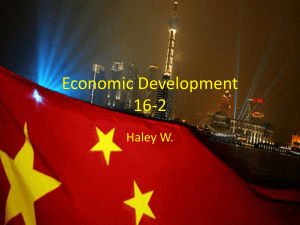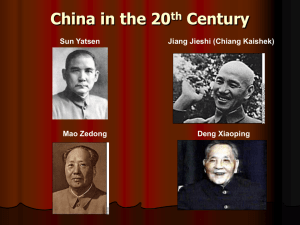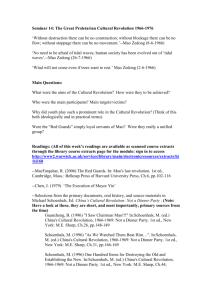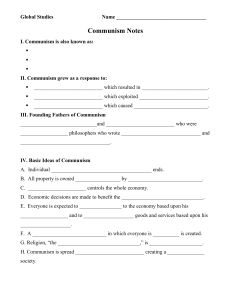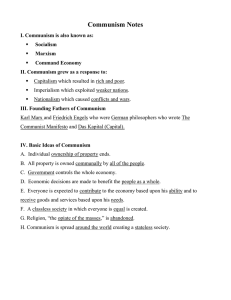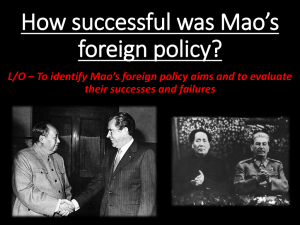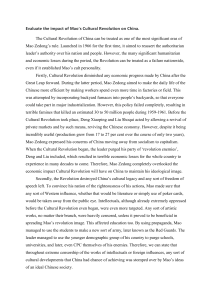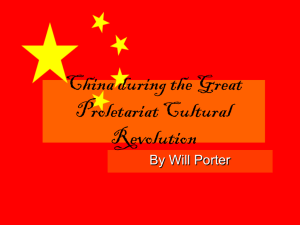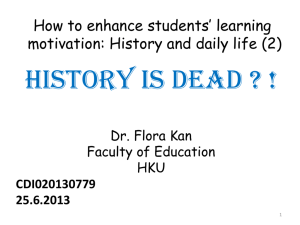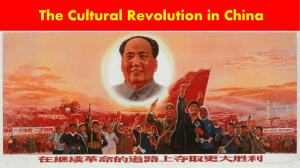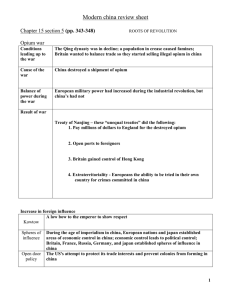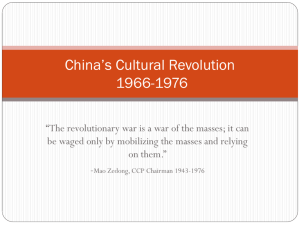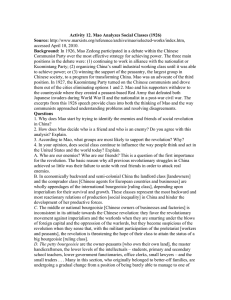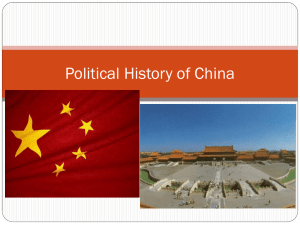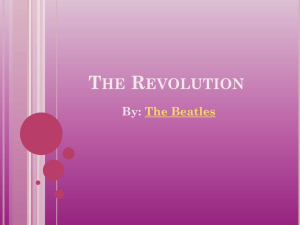Mao*s Cultural Revolution and Religion
advertisement
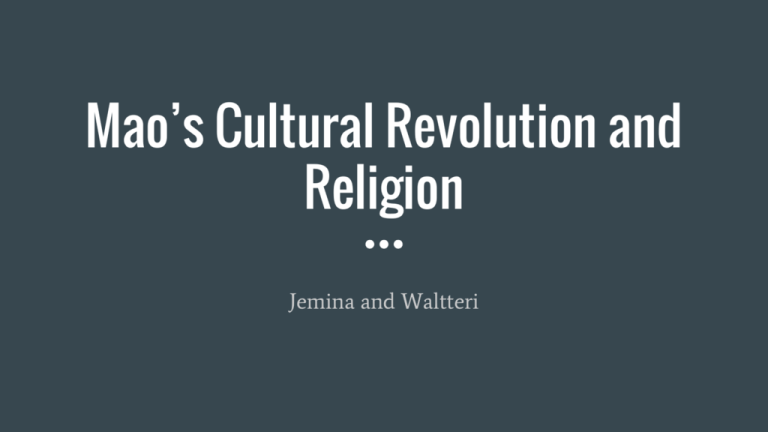
Mao’s Cultural Revolution and Religion Jemina and Waltteri Background ❖ Before 1949 there was no official religious persecution ➢ Foreign missionaries faced some opposition ➢ Buddhism and Taoism the most common religions but also Christian minorities ➢ Most Chinese not particularly spiritual ➢ Intellectuals didn’t practice spiritual rituals but followed principles of Confucianism ❖ After Mao came to power, the party attempted to replace religious ideologies with communist ones ➢ Religion was seen as a capitalist invention to keep the lower classes in their place with promises of a better afterlife ➢ Mao: “Organized religion is poison and as bad as Nazism” → perspective ➢ Religious toleration guaranteed by the Constitution; however a campaign against “superstition” began in 1950 forbidding traditional religious rituals ➢ “Patriotic Churches” operating under government control ➢ Religious persecution against Buddhists was especially strong in Tibet; contributed to the genocide of estimated 1.2M people During the Cultural Revolution ❖ Considered to belong to “The Four Olds”; the aim of the CR was to get rid of these → change ➢ Old Customs, Old Culture, Old Habits and Old Ideas ❖ Active suppression of religion → consequence and significance ➢ No public worship or ceremony allowed ➢ The remaining clergy was imprisoned or forced to labour and reeducation ➢ Religious monuments and buildings were destroyed as well as historical and religious texts Survival of religion during the Cultural Revolution ❖ Christian organizations went underground ➢ in remote rural areas Christianity actually spread during the revolution as people converted ❖ Many religious rituals were carried out within the family which ensured the endurance of the religion → continuity ➢ Eg. ancestor worshipping still remains widespread in today’s China ❖ The major religions were almost destroyed but did not die out completely


